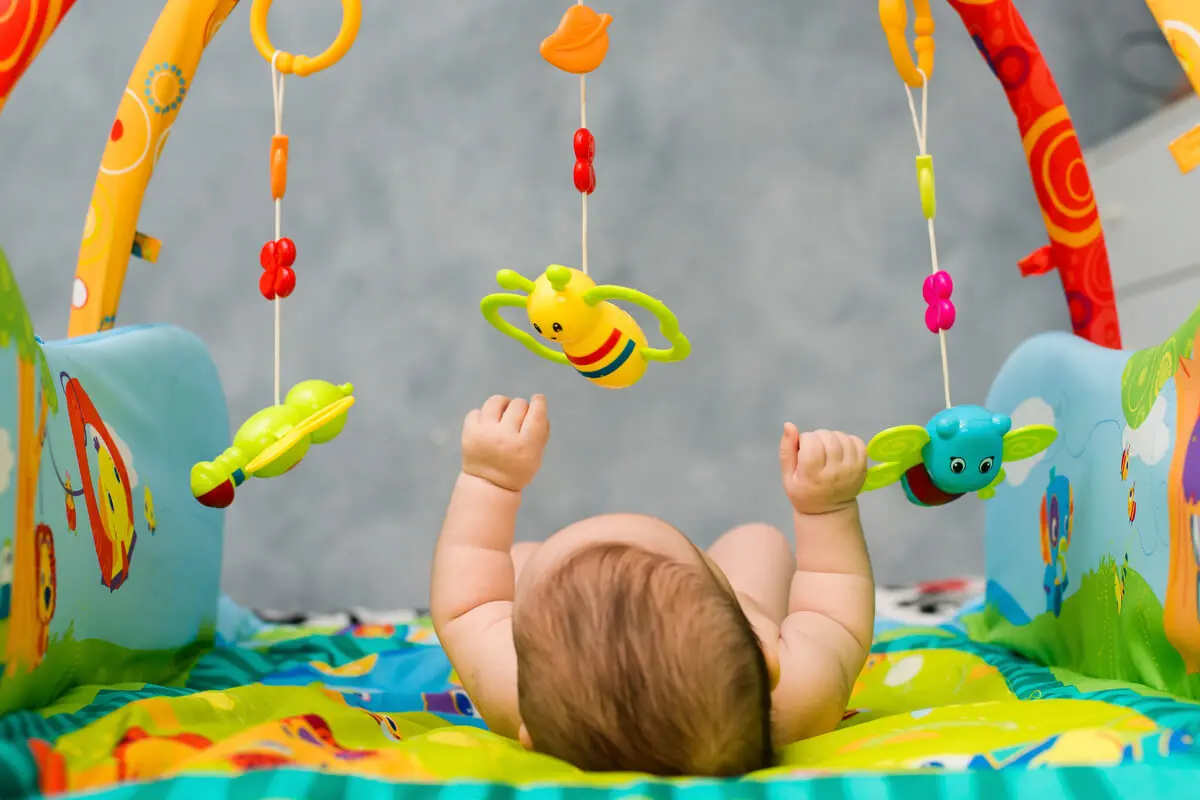What is the Absorbing Mind of the Child According to Montessori?

The absorbing mind is a concept proposed by the famous pedagogue Maria Montessori. It refers to the fact that children between 0 and 6 years old learn with great ease.
Their mind is like a sponge that absorbs everything.
Montessori drew attention to the fact that in this first stage of life, children develop a great deal of learning without much effort. They learn to talk, to walk, to relate, and to name the world.
The progress that occurs up to the age of 6 is amazing. It’s a stage in which the child is completely transformed and acquires several complex skills, such as verbal and non-verbal language. This is made possible by the absorbing mind.
What is the child’s mind like?
Maria Montessori was an Italian pedagogue who developed a highly effective and prestigious learning method. It was based on the contributions of the French physicians Jean Itard and Edouard Sèguin, and those of Pestalozzi, a Swiss pedagogue.
Her observations allowed Montessori to demonstrate that the child is endowed with a natural curiosity and an enormous capacity for surprise. It can be said that almost any stimulus immediately attracts their attention.
According to Montessori, this happens because, unlike adults, children assimilate all the information offered to them by their environment in a natural and involuntary way. Therefore, this is the ideal stage for them to have new experiences at their own pace and based on their interests.

What is the absorbing mind?
The absorbing mind is a state in which the child has the capacity to collect information from his environment in a spontaneous way. He or she then processes this information and integrates it into his or her intellect and life.
This mental state occurs between the ages of 0 and 6 years.
According to Montessori, the absorbent mind is unconscious in nature during the first three years and conscious in the following three years. She points out that the child goes from being an “unconscious creator” to being a “conscious worker.”
We speak of an absorbing mind because, in reality, an infant is like a sponge that absorbs everything. The main characteristics of this state of mind are the following:
- The creative nature is prioritized
- It’s a natural condition in the human species
- It’s temporary – it’s only between 0 and 6 years old.
- Knowledge is absorbed quickly and effortlessly
- The absorption of information is indiscriminate and unlimited
We think you may be interested in reading this, too: The Benefits of Science for Children: Curiosity and Exploration
How does the absorbing mind develop?
The absorbing mind is natural, without any will intervening in it. By the mere fact of being alive, the child absorbs information. He or she makes everything around him his or her own, according to his or her needs.
However, Montessori observed that the absorbent mind encompasses different dimensions. There are a series of predispositions that lead the child to focus his attention on certain stimuli at different times. In each of them, he or she focuses on what’s necessary for his or her development.
In this way, transitional and simultaneous stages are configured, which Montessori called sensitive periods. The duration of each varies, as well as the intensity. They usually overlap.
Like this article? You may also like to read: What to Do When Children Prefer One Parent Over the Other
Sensitive periods
Sensitive periods are stages in which the needs and interests of the little ones change according to their development. As a whole, they make up the evolutionary line of the absorbing mind:
- Order: From 0 to 6 years of age. There’s an interest in classifying and categorizing everything around them. This is favored in environments where there’s order.
- Movement: From 0 to 5-6 years. Interest is focused on moving from one place to another. It intensifies when the child learns to walk.
- Language: This occurs from 0 to 7 years. They acquire vocabulary without direct teaching.
- Sensations: This occurs from 0 to 6 years of age. It refers to the development of the senses. Hearing and sight are active from the beginning. With time, touch, taste, and smell become more acute.
- Small objects: This phase takes place between 0 to 6-7 years. Interest focuses on small objects and attention to detail.
- Social life: This occurs between 0 to 6 years. It has to do with the need to relate to peers and acquire patterns of coexistence.

Educational implications
The fact that the absorbent mind operates in a natural way doesn’t mean that adults play no role at this stage. On the contrary, their role is fundamental for children to advance in their learning and development process.
The key is to allow and encourage them to have novel experiences according to their own rhythms and needs. Over time, this is what will shape their perception of the world and of themselves.
Montessori points out that educational methods should not only focus on intellectual development, but also need to favor learning, according to each sensitive period. The spontaneous interest of the child should be taken into account.
The stage of the absorbed mind is unique in life. Itn fact, it’s estimated that it would take an adult person about 60 years to learn all that the child learns in these first moments of life.
After the age of 6, the absorbing mind disappears. In its place is the reasoning mind, which doesn’t have the same learning capacity.
All cited sources were thoroughly reviewed by our team to ensure their quality, reliability, currency, and validity. The bibliography of this article was considered reliable and of academic or scientific accuracy.
- Santerini, M. (2013). Grandes de la educación: María Montessori. Padres y Maestros/Journal of Parents and Teachers, (349).
- Carbajo, M. E., & Mur, B. (2016). Una respuesta a la curiosidad natural. Cuadernos de pedagogía.
- María, M. (1986). La mente absorbente del niño. México DF Editorial Diana,(Original italiano 1952).
This text is provided for informational purposes only and does not replace consultation with a professional. If in doubt, consult your specialist.








